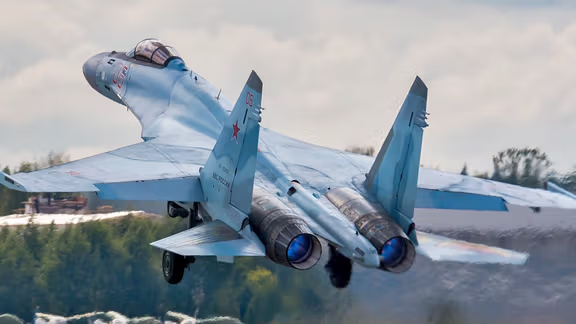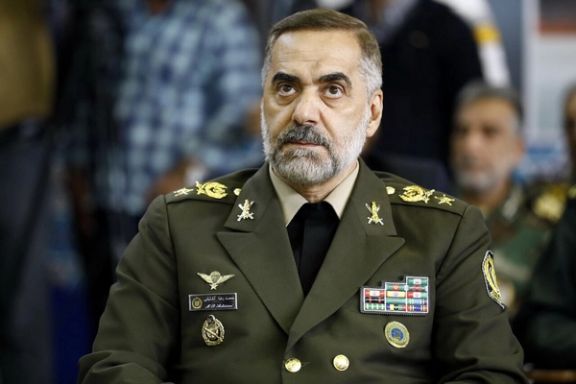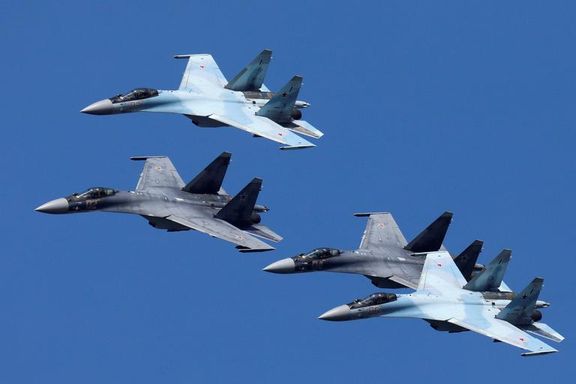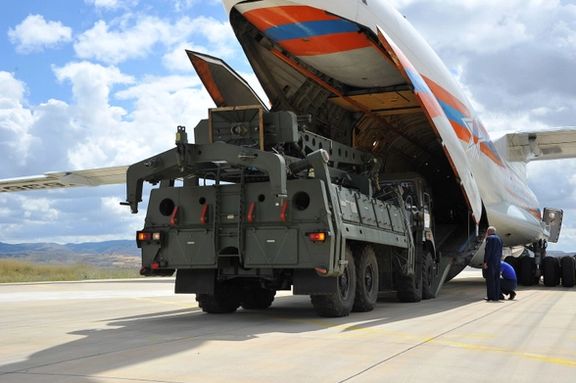Iran Implies Collapse Of Deal To Buy Russia’s Su-35 Warplanes

Iran’s defense minister has tacitly confirmed that the deal to buy long-sought Sukhoi Su-35 fighter jets from Russia has collapsed.

Iran’s defense minister has tacitly confirmed that the deal to buy long-sought Sukhoi Su-35 fighter jets from Russia has collapsed.
Mohammad-Reza Gharaei Ashtiani was asked on Wednesday about the status of the deal – which was purportedly finalized last year. He replied the country has the capability to produce the fighters domestically, suggesting a possible shift in plans.
Iranian officials announced on several occasions during the past few years that Russia would sell several Sukhoi Su-35 fighter jets to Iran, but such claims never yielded any results.
Ashtiani, who sounded reluctant to provide any details, said: "At some point, we made a deal for the purchase, but we came to the conclusion that we have the ability to produce (fighter jets) in the country." However, he also mentioned that the authorities are "investigating the situation" and could reconsider the purchase if deemed necessary.

In 2018, Iran said it had started production of the locally designed Kowsar fighter for use in its air force. Some military experts believe the jet is a carbon copy of an F-5 first produced in the United States in the 1960s.
Different scenarios have been speculated as to the reason behind the collapse of the deal with Russia. There are speculations that Israel may have influenced Russia's decision to withhold the advanced fighters from Iran. The American government has also expressed concerns about the extensive military cooperation between Russia and Iran, considering it potentially harmful to regional stability.
A more plausible explanation was given by aviation expert and author Babak Taghvaee, who said the obstacle is Russia's refusal to transfer crucial technology for producing Su-35 parts in Iran and providing knowledge for domestic maintenance for the next 30 years.
He cited Commander of the Iranian Army’s Air Force Brigadier General Hamid Vahedi as telling his sources that "for now, the General Staff of the Armed Forces has opposed procurement of Su-35SE multirole fighter jets from Russia as Russian government refuses to transfer technology for production of their parts in Iran as well as to provide the knowledge for maintaining the aircraft domestically for the next 30 years."

Taghvaee added that Russians want to sell only 25 Su-35Es previously ordered by Egypt without proper maintenance, weapons, spare part support and simulators.
“On the basis of the lessons learned from the sale and delivery of Su-30SM fighter jets to Armenia and the insidious decision of the Russian government for not allowing Armenians to operate them against Azerbaijan during the recent Karabakh war, it is highly possible that the untrustworthy Russians do the same to the Iranian air force in case of their intention for using Su-35SEs in war," he added.
In September, Vahedi said that buying Su-35s is on the agenda of the Air Force but the country has no plans to buy Sukhoi Su-30s, both developed from Sukhoi Su-27 which was a Soviet-origin twin-engine supermaneuverable fighter aircraft. Su-35 is single-seat but Su-30 is a two-seat, multi-role fighter. According to reports, the Army’s Air Force needs at least 64 aircraft, 24 of which will come from Egypt's order which remained undelivered due to US pressure on Cairo.

Iran has also expressed interest in obtaining other advanced military tech from its partner in crime such as air-defense system S-400, a mobile, surface-to-air missile system. Iran has supplied hundreds of kamikaze drones to Russia that have been used to target Ukraine's military and civilian infrastructure. Moscow denies that its forces use Iranian-built drones in Ukraine, although many have been shot down and recovered there.
Iran’s air force has only a few dozen strike aircraft: Russian jets as well as ageing US models acquired before the Iranian revolution of 1979. Instead, Iran has developed a variety of drones and missiles seen as a threat for other regional countries, especially Israel.
Earlier this week, the Israeli army successfully dropped bunker-busting bombs intended for the destruction of special trenches from its F-35 fighters, the Israeli Channel 14 reported, highlighting it as a clear message to Iran. Israel is the second country in the world after the US to test this capability, according to the report.